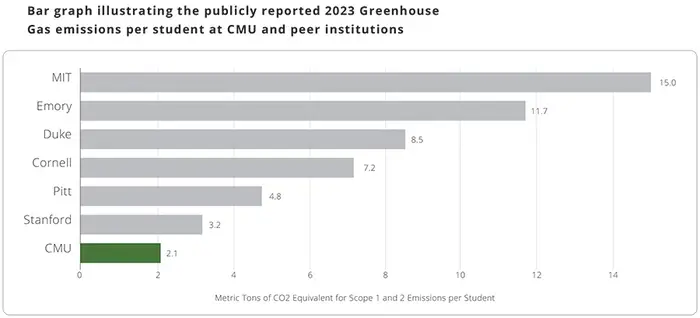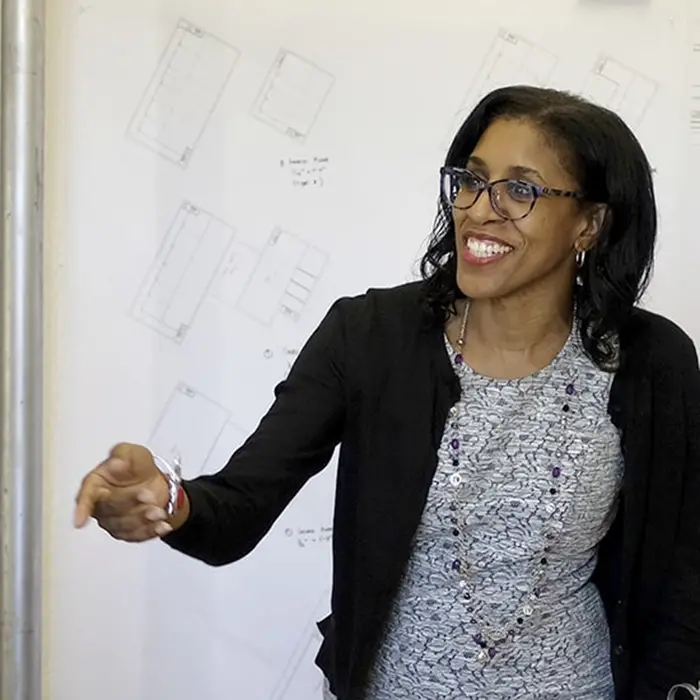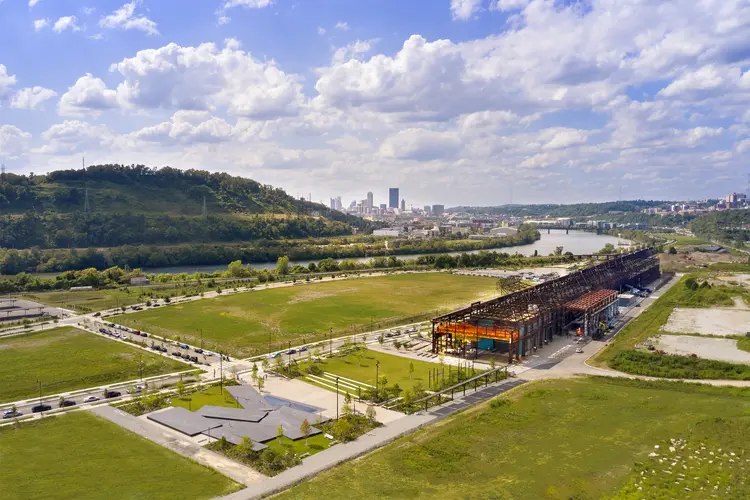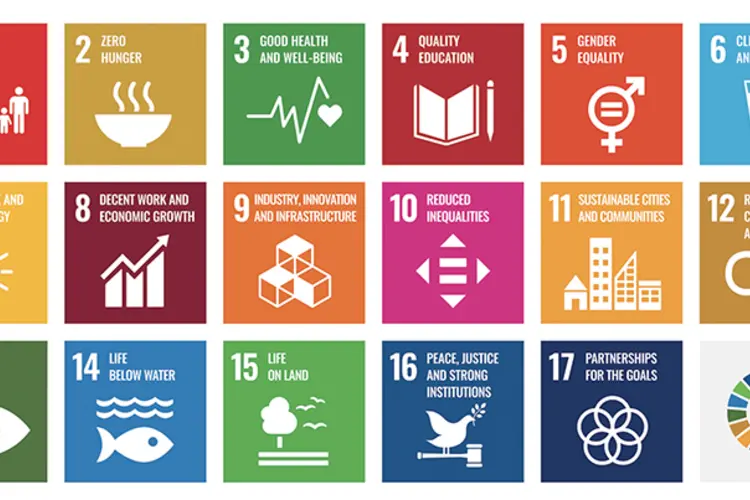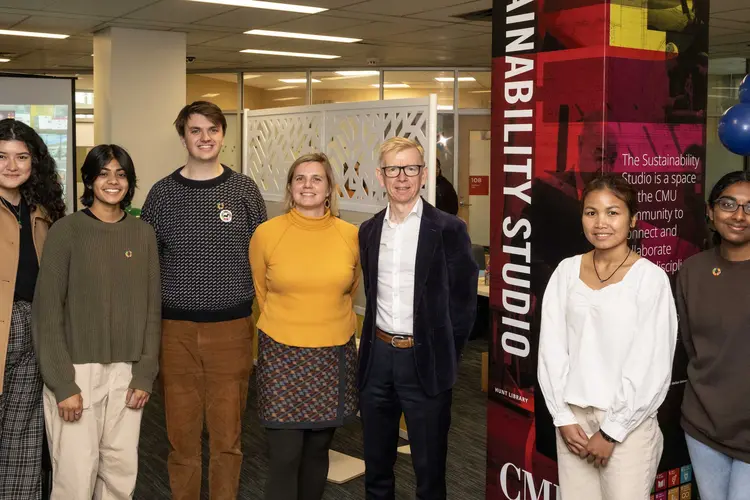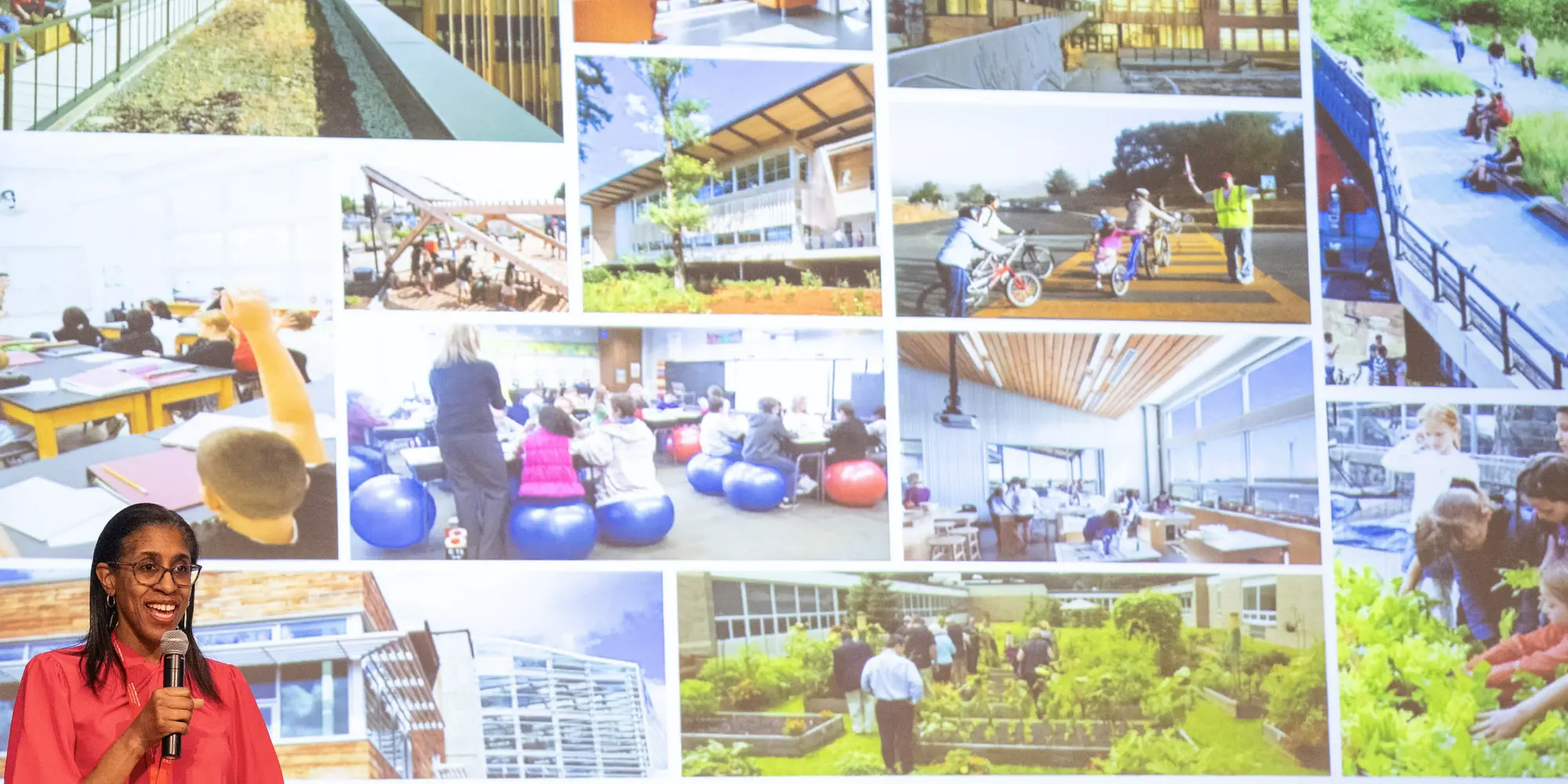
Carnegie Mellon: A Hub for Action and Innovation in Sustainable Research and Practice
Media Inquiries
During a recent power talk(opens in new window) for energy and sustainability leaders from across the nation, Erica Cochran Hameen(opens in new window) shared her expertise on sustainable design practices for healthy and energy-efficient buildings.
While highlighting that the average American spends 90% of their time indoors, and that 75% of American electricity usage comes from buildings, Cochran Hameen, an assistant professor at Carnegie Mellon University’s School of Architecture(opens in new window), emphasized the interconnected benefits of improving energy efficiency.
“When you think about sustainability and energy efficiency, it has an impact on wildlife. It has an impact on air quality. It has an impact on gender, and equity and rights of different people, of different sexes. It has an impact on our children,” she said.
Cochran Hameen delivered the talk at Energy Week, the Wilton E. Scott Institute for Energy Innovation(opens in new window)’s annual conference on the future of energy research, policy and education. An expert in building performance and sustainable design, she’s among the faculty, staff and students striving to create a sustainable future for all who can call Carnegie Mellon home.
Research and practice across the university have a wide-ranging impact on the environment. While events like Energy Week, now in its eighth year(opens in new window), have made CMU a hub for national conversations on energy efficiency, its own Sustainability Initiative(opens in new window) has focused on linking the university’s activities to global efforts using the framework of the Sustainable Development Goals, also known as the Global Goals. The set of 17 global objectives center equity while linking environmental, social and economic issues.
Sustainability in practice on campus at Carnegie Mellon
In the last 15 years, Carnegie Mellon has signed on to several local and national commitments to advance environmentally sustainable practices(opens in new window), building on decades of campus-level commitments to waste reduction, green building and water conservation.
“CMU has been a leader in environmental practices for more than 20 years, and we need to keep pioneering,” said Sustainability Initiative Steering Committee member Steven Guenther(opens in new window), assistant vice president for Facilities Management and Campus Services, and university engineer. “The health of our planet affects all of us.”
Recycling and waste management at Carnegie Mellon
Carnegie Mellon’s programs — focused on material reduction, item reuse, recycling and composting — have helped reduce what would otherwise be sent to the landfill. Its food composting program, implemented in 2008, now includes all campus dining locations and many campus residences, break areas and office suites.
During the 2022-23 academic year, more than 154 tons were composted, and more than 7,000 pounds of food was donated to local organizations through CMU’s partnership with 412 Food Rescue.
How CMU manages energy and water
The university performs an annual greenhouse gas inventory and has committed to eliminate or offset net greenhouse gas emissions by 2030(opens in new window).
As an inaugural member of the Pittsburgh 2030 district, CMU is also aiming to reduce energy use, water consumption and transportation emissions by 50% by 2030. To achieve this, the university utilizes low-energy materials and appliances in physical spaces and decreases water usage through low-flow fixtures and stormwater reuse and management(opens in new window). In 2023, CMU had the lowest ratio of greenhouse gas emissions per student, compared to peer universities.
Green Building Design Shapes Campus
CMU has adopted the Leadership in Energy and Environmental Design (LEED) green building rating system(opens in new window) for all new construction and significant renovations. The goal is to achieve an LEED Silver rating or higher for each project.
There are already more than 25 LEED-certified projects and buildings on CMU’s Pittsburgh campus. Since 2003, green building at the university has provided estimated energy savings equivalent to the use of approximately 7,000 light bulbs and 6.8 million gallons of water per year.
Transportation vision focuses on people over vehicles
The university’s 2022 Institutional Master Plan(opens in new window) outlines a 10-year vision that focuses on people over vehicles. This includes investing in “green” methods of transportation and reducing the need for single-occupant vehicles.
Community members can take advantage of several mass transit options(opens in new window) and an active campus bicycle culture(opens in new window). Electric vehicle charging stations are available to support clean energy and lower-emission vehicles. The university also uses several electric vehicles as a part of its facilities fleet. Learn more about CMU’s overall philosophy on campus mobility(opens in new window).
Research for a sustainable future
Nearly a dozen research institutes(opens in new window) across campus, like the Scott Institute, study issues including air quality, building performance, energy, green science and urban water quality. The students, faculty and staff at CMU pursue viable, lasting solutions for major societal challenges.
For instance, in its Robotics Institute(opens in new window), researchers are developing autonomous drones that could provide firefighters with situational awareness of wildfires, which can range over thousands of acres and are subject to rapid, weather-related changes in direction and intensity.
In the Department of Chemical Engineering(opens in new window), Assistant Professor Daphne Chan works to create polymers and plastics for sustainable materials. Her colleague, Assistant Professor Coty Jen, is partnering with the Pennsylvania Department of Environmental Protection(opens in new window) to determine if emissions from harmful algal blooms could be unsafe to breathe.
CMU researchers from the Center for Atmospheric Particle Studies(opens in new window) also quickly aided in monitoring air quality in East Palestine, Ohio, after a train derailment there last year.
Action and innovation at CMU
All aspects of CMU’s environmental impact are critical, but there is one in particular that Guenther thinks about the most.
“To help avoid the worst impacts of climate change,” he said, “we need to drastically reduce global carbon emissions.”
Not doing so will result in global warming, which could cause widespread drought, extreme weather and rising ocean levels — drastically changing humanity’s way of life. Guenther is proud that Carnegie Mellon has reduced its emissions from sources owned or controlled by the university by 74% compared to its 2005 baseline. However, there is still more work to do.
“CMU is a place for action and innovation, and we need to keep applying that to the environmental problems of our time,” he said. “We only have one planet, so it’s our responsibility to take care of it.”
To learn more about CMU’s green practices or how to get involved, visit www.cmu.edu/environment(opens in new window).
Sustainability doesn't "fit into just ecology, or just chemistry, or just engineering or just finance. It’s all of it. The way we approach those problems at @CarnegieMellon is to recognize their interdisciplinary nature and build tools that reflect that.”https://t.co/IxFARRksI0 pic.twitter.com/MwNitd8NYY
— Sustainability at Carnegie Mellon University (@sustainCMU) May 21, 2024
